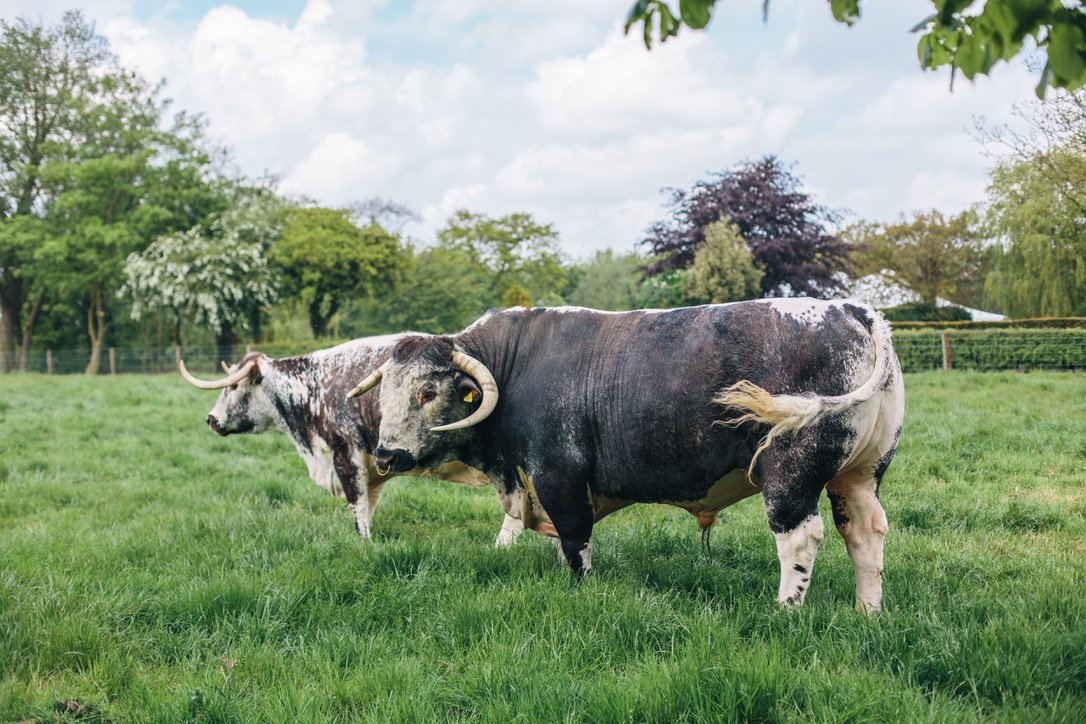
Kenton Hall Farm
De’Kenton Herd
You can see our English Longhorn cattle in the field - please do not enter the field for your own safety. We are endeavouring to play our part in increasing the numbers of this breed which very nearly died out in the 1960’s. We look after these cattle in the traditional way with clover rich grass lays for summer grazing and home-made hay for winter feed.
English Longhorns are not related to the American or Texas Longhorn whose ancestors came from Spain. They do have a long and fascinating history linked to that of the great livestock pioneer of the 1700's, Robert Bakewell of Dishley. The English Longhorn originated from the northern counties of England, it was used as a draught animal and its milk was used for butter and cheese.
English Longhorns are large lean beef cattle with an impressive sweep of horns that curve down to around the nose. These impressive horns are valued in the pedigree. The body may be any one of a wide range of brindle colours (including colours from red to grey) but they all have the characteristic white line or "finching" along the back and down the tail, which is passed onto their cross bred progeny. Cows range in height from 130 to 140cm and weigh 500 to 600kg. Males average 150 cm in height and 1000 kg in weight.
English Longhorn is renowned for its ease of calving. Prominent hook bones, deep pins and a roomy birth canal result in almost no recorded incidence of assistance being needed at birth. Longhorns have excellent milking ability and their long and level lactation help avoid a flush of milk at calving. They rear their calves very well. A 6% butter fat is not uncommon although no-one is currently milking them commercially.
They are excellent mothers and their docile nature makes them an easy breed to manage. Their breeding, longevity and relatively low body weight makes them very economical and inexpensive to feed.
Thank you for reading.
English Longhorn Breed
Robert Bakewell (1725-1795), a man who was a revolutionary in the field of interbreeding became devoted to one aim - improving livestock to provide meat for the masses of people who went to work in towns in the Industrial Revolution.
He took horned heifers and crossed them with a Westmoreland bull to create the Dishley Longhorn, now called the English Longhorn. Through this new and careful selection of cattle he improved the size and quality of this breed which became widely produced throughout England and Ireland until it was surpassed by the Shorthorn in the 1800's.
Beef Production
The great overall length generally associated with the Longhorn is correlated with a rapid growth rate and lean carcase. It is a well established fact that intramuscular fat or “marbling” within meat is largely responsible for succulence, tenderness and flavour – the hallmark of beef with superior eating quality.
Unlike many rival breeds, which require the laying down of excessive amounts of external fat before the formation of intramuscular fat can take place, a properly finished Longhorn carcase will benefit from “marbling” without such excess external fat cover.
Cattle Grazing
Cattle have particular methods and preferences of grazing. With no upper set of front teeth, they wrap their long tongues around grass and flowers. After giving birth, cows often tuck into patches of nettles, rich in iron.
Cattle are also important vectors of seeds, transporting well over a hundred species of plants around a landscape through their gut, hooves and fur. This is an extraordinary number compared to, say a roe deer, whose efficiency at digesting and preening, means it transports only around 28 types of seed.
Get in touch…
If you have any questions or would to know more, don't hesitate to contact Tom - 07594283217.




